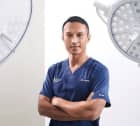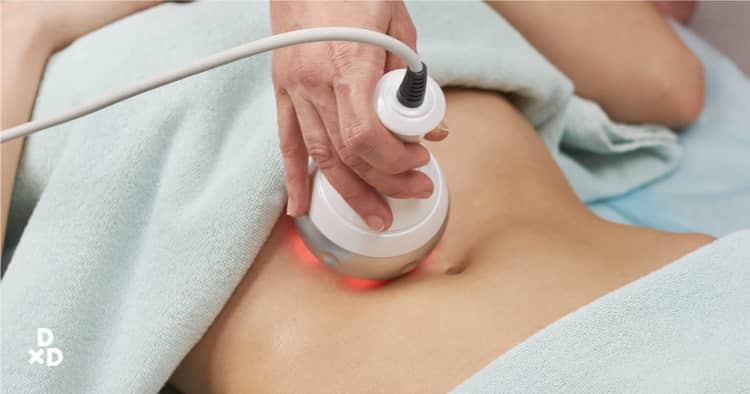Are your eyebags causing you to always look tired? Join us in our webinar as we explore the non-surgical alternative to removing eyebags permanently.
Title: Consult an Aesthetic Doctor: Non-surgical Eyebag Removal
Date: 20th January 2021
Time: 8pm
Register Here: http://bit.ly/37l7B6d
“Did you sleep well last night? You look tired.” Is that a question you hear from colleagues and loved ones? You may get asked this question even if you are wide awake and well-rested. If this is the case, you may have a problem with your eyelids. In that case, you might want to go for an eyelift. But what is an eyelift? Do you have to go under the knife to have one? Are you too old to go for one? I’m Dr Lee Mun Heng and I will answer some common questions that I receive from my patients.
What is an eyelift?
Eyelift is a nebulous term used by many patients. It refers to the treatment of either or both of the upper and lower eyelids. The medical term for treatment is Blepharoplasty. Typically, it includes solutions centered around specific treatable aesthetic conditions such as a low brow position, sagging upper eyelid, or the loss of double eyelid fold.
Upper eyelid issues include droopy eyelids (Ptosis) and baggy eyes (Dermatochalasis). For patients complaining about lower eyelid issues, common conditions include eye bags, loose or sagging lower eyelids, or even the opposite of an eye bag such as a sunken under-eye area compounded by dark eye rings! There are many possibilities of conditions a patient could have. [1]
These issues are usually caused by ageing resulting in weak facial muscles, excess skin and/or fat, and stretched eyelids. [2]
Who can go for eyelifts?
Most of my patients are past their 20s, but I occasionally get a patient who is younger. There is no age limit to when one can go for an eyelift, but I recommend you wait until you are older as your muscles around your eyes are stronger while you are young. However, do not feel embarrassed if you want to visit a doctor at a younger age. Each person is unique and there may be legitimate reasons why you feel you need an eyelift. We can discuss what issues you have and what solutions are available.
Conversely, people in their 70s or 80s might want to go for treatment. There is no upper age limit for non-surgical eyelifts. [3] In fact older patients may benefit the most from treatment since that is the time when the skin and muscles have weakened substantially.
The non-surgical options I discuss below can be used on any patient.
What are the advantages and disadvantages of non-surgical eyelifts?
Surgical and non-surgical eyelifts work in different ways. Surgical methods involve making an incision on either your upper or lower eyelids and rearranging or removing some skin and fat. [4] Non-surgical methods involve tightening or relaxing muscles and skin through various means. Each non-surgical method described involves a different method of eyelifting. For example, Botox works by relaxing your muscles, while FOTONA™ Smooth Eye™ Laser rejuvenates loose tissue. I explain in detail below.
Why do people go for eyelifts?

Most of my patients come in for aesthetic reasons such as to remove eye bags or handling excess skin. As the age-old idiom goes, ‘Your eyes are the windows to your soul’. In practice, people do take notice of the midface and important components include the eyes and their surrounding area. Rejuvenating loose upper eyelids, elevating the eyebrows, shrinking a protruding eye bag, and lightening the dark eye rings all contribute to a more attractive, lively and younger appearance. [5]
Other patients may have a medical reason for seeing me, such as going for an eyelift because their eyelids are covering their eyes, obstructing their vision. This happens when the muscles around your eyes have grown significantly weaker. If this is the case, I sometimes recommend surgically treating the eyelid. If your drooping eyelid is caused by excess skin, then you are a potential candidate for a non-surgical eyelift.
What are the different techniques of eyelifting and how much do they cost?
There are 2 ways of doing an eyelift. There are surgical options [6] [7] and there are non-surgical options. [8] Depending on the diagnosis, there are several treatment modalities to treat the root of the specific concerns. I talk about 4 different non-surgical treatments in this article.
Type of treatment
Conditions/areas for treatment
Cost
BOTOX™ EyeLift
-Elevate eyebrows
-Wrinkles & crow’s feet
$350-$800
NEOGEN™ Plasma EyeLift
-Loose & sagging upper & lower eyelids
$200-$500
AGNES™ Non-Surgical eye bag Removal
-Eye bag removal
$700-$1500
FOTONA™ Laser Eye Rejuvenation
-Eye bag reduction
-Sagging upper & lower eyelids
$400-$1200
How does each treatment work?

The BOTOX™ EyeLift
Botulinum toxin, more commonly known as Botox, has been around for years. These days, there are many different brands out there. At my practice, I am very comfortable using the original Allergan™ brand, BOTOX™. Many patients are surprised by the noticeable effects around their eyes a single treatment can achieve. Patients commonly see me for easily treatable problems like an overactive centre frown line compounded with Crow’s feet on the sides.
Let me explain how Botox works. The muscles around the eyes combine to depress and lower the eyebrow position and hence affects the distance between the eyebrows and upper eyelid margins. Relaxing these muscles with just a single treatment ‘opens up’ the eyes, making one look fresher. Contrary to common belief, there is no addictive nature to the treatment and, depending on the skills of your doctor, usually no bruising or downtime. You can return to work immediately. The treatment can last for up to 6 or 8 months and a repeat treatment can be done.
NEOGEN™ Plasma
For patients with loose and sagging upper eyelids, I may suggest a skin tightening device that can be safely used around the eyes. We often use a Plasma technology called NEOGEN™.
I find this technology very interesting, and here is why. We are no longer constrained by traditional RF (radiofrequency) and HIFU ultrasound-based devices. NEOGEN™ Plasma instead harnesses thermal energy from Nitrogen gas plasma that penetrates the eyelid skin, stimulating new collagen production and tightening the skin. You just need to keep your eyes closed while we apply a serum for hydration before the plasma is applied. Some warmth is felt and, occasionally, the patient feels slightly hotter. The eye is safe from the plasma energy when the eyes are closed. Little to no exfoliation is noticeable and there is usually no redness or swelling. Patients return to work immediately.
As the procedure is non-surgical, multiple treatments are recommended. You will notice progress in lifting over time. By tightening one side more than the other to compensate, mild uneven upper lids can be treated. However, I refer clinical cases of drooping eyelids (Ptosis) to surgery as Ptosis is a surgical problem.
AGNES™ non-surgical eye bag removal
For patients who have mild eye bags with protruding fat pads in the undereye area, we offer the option of a non-surgical eye bag removal using the AGNES™ technique from Korea. This technique was jointly developed by Dr Kobayashi from Japan and Dr Ahn from Korea.
It is a very interesting technique as it can actually ‘meltdown’ the excess eye bag fat and tighten up the undereye lid skin at the same time.
Patients who do not wish to go under the knife like this option. The lower eyelid is cleansed and numbing cream is applied. After which, local anaesthesia is given. Patients usually do not feel the local anaesthesia since they had numbing cream applied before that.
The AGNES™ uses a patented ultrafine filament that is finely coated with insulting silicone which is very hard to see with the naked eye. I perform the procedure under magnification. The filament is attached to a pen-like holder and connected to the AGNES™ machine. A specific frequency (Hz) is sent through the filament, which melts the fat and tightens up the skin. I usually recommend 2 treatments at an interval of about 1 or 2 months. Some patients see results after the 1st session but most results appear after the 2nd session. No cuts or stitches are required.
Most patients experience mild swelling which requires cold compression for a few days. We recommend resting over the weekend and going back to work after rest.
FOTONA™ Laser Eye Rejuvenation
The FOTONA™ Smooth Eye™ Laser is a patented laser wavelength and pulsing called the Smooth™ mode using Er:YAG laser. For the first time, we are able to use laser to safely, comfortably and conveniently firm up mild eye bags caused by loose tissues and rejuvenate the skin around the eye.
The procedure is rather fast. Again, numbing cream is applied to the eyelids and then cleaned off. Anaesthetic eye drops are applied to the eye and the patients fitted with an opaque contact lens (eye shields) to protect the eye. The Smooth™ laser is then applied from behind the lower eyelid first to rejuvenate loose tissues and then in a circular motion to the outer skin of the eyelids.
Patients are advised to avoid sun exposure, apply moisturizing eye serum for a few days and that’s it.
Should I opt for Surgical or Non-surgical eyelifts?

It all depends on the diagnosis and severity of the condition. For example, cases with a clinical diagnosis of muscle weakness affecting vision such as Ptosis are frequently sent off to the Plastic surgeon for a surgical consultation. Severe eye bags with large loose bags called Festones are also sent off for surgery. I work closely with a plastic surgeon. This relationship makes sense as there are patients who present to my practice with problems that are beyond my expertise and it is every doctor’s duty to ensure you receive safe care.
What are the risks and side effects of eyelifting?
Depending on the procedure, non-invasive and non-surgical options are generally low risk in nature. Sometimes you may feel sore in the area of treatment. While there are many pictures of eyelifts going wrong, usually with Botox, a considerate doctor will mitigate the risk of this happening through careful planning before the eyelift. They should also inject small amounts at a time to ensure that nothing goes wrong with the procedure. Find a doctor who is familiar and comfortable with working around the eye area.
Another question I receive is whether there will be any scarring around the eye. In most cases, there is little scarring involved, so you can rest assured that you will get the natural look you want.
I’m not sure what I need but everyone says I look tired!
Upper and lower eyelid complaints are rather common at my aesthetic practice. Patients usually have non-specific complaints, such as their eyes looking ‘tired’ and ‘saggy’. It is normal if you are unsure about what you want or need before you visit the doctor. The consultation you have with someone like me revolves around narrowing down these presenting complaints to a diagnosis before discussing treatment options, such as the ones I list above.
Conclusion
You may have several concerns about how you look or with your eyelids obstructing your vision. If this happens, come and visit me or your aesthetic doctor to discuss the issue. If your condition does not require a plastic surgeon, we can discuss non-surgical options using any of the methods above. With the right treatment, we can help you look more awake and ready to take on the world!
Dr Lee Mun Heng is driven by a passion for helping his patients look their best. He does this by aiming to draw out their natural beauty through the application of safe, minimally invasive and holistic procedures. A graduate of University of Cambridge, Dr Lee read medicine and surgery on scholarship from the Cambridge Commonwealth Trust.















